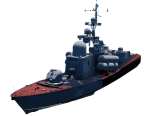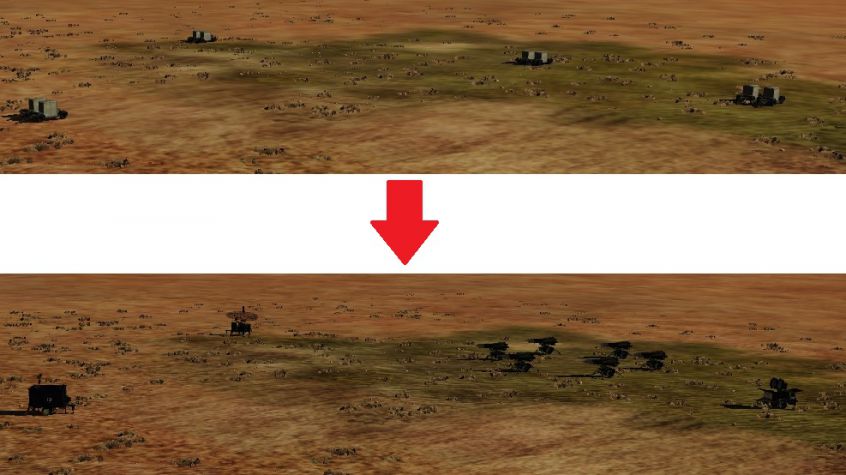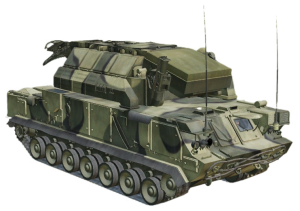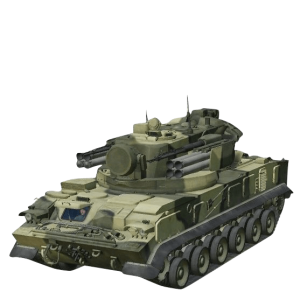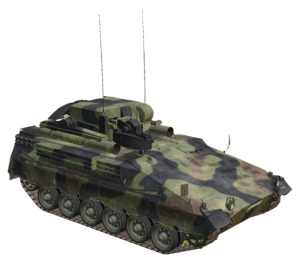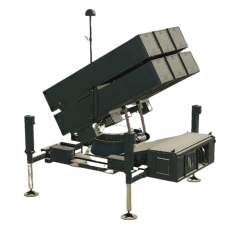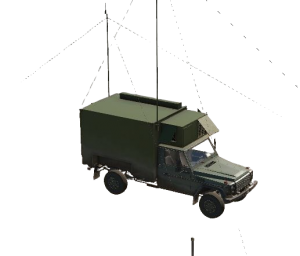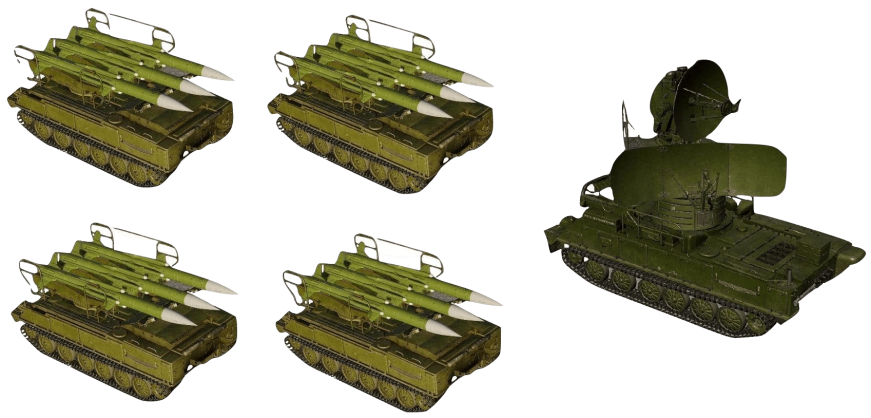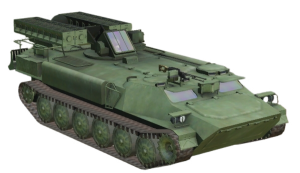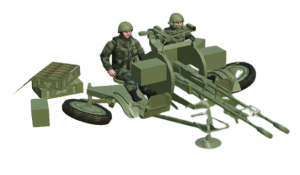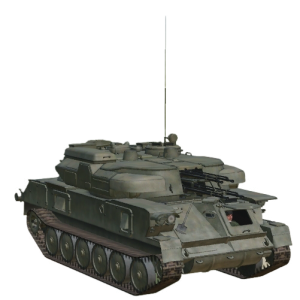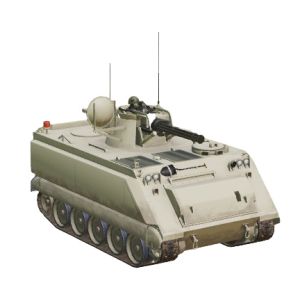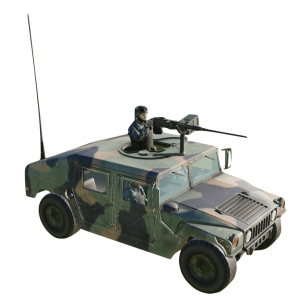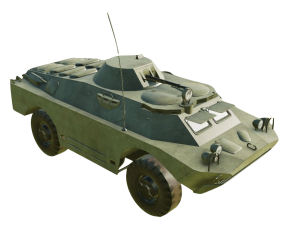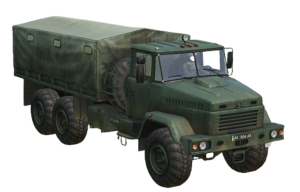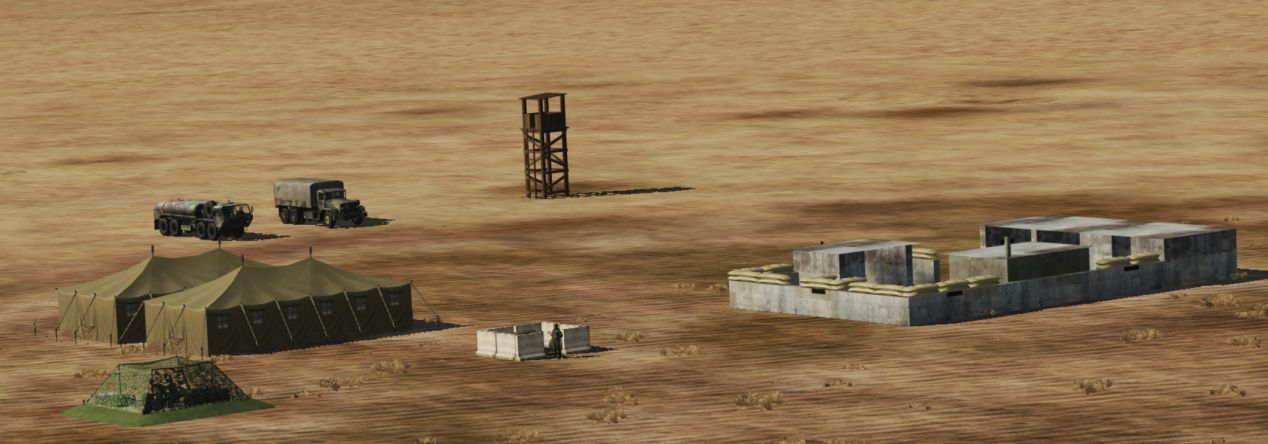Logistics
Logistics are carried out by means of CTLD - Complete Troops and Logistics Deployment script instead of sling loading cargo around.
Logistical pilots play a vital role in the teams success. In addition to the ability of capturing closed Airbases, FARPS, SAM Sites, Naval Bases, Road Bases and Army Bases they are able to:
- Deploy air defenses
- Deliver Fuel & Repair crates
- Deploy Ammo Trucks
- Deploy EWRs (Early Warning Radar)
- Deploy JTACs (Joint Terminal Attack Controller)
- Collect intelligence for an AI bomber strike
- Deploy assets such as mobile artillery, light tanks, anti-ship missile batteries
- Deploy mobile temporary FARPS - FOB's
Logistical aircraft can only carry one crate at a time, which must be deployed 10km or further from a friendly Airbase, FARP, Road-base or a Naval-base. Neutral bases are considered no mans land and minimum distance restrictions do not apply. When deploying multiple crates, or a package that requires more than one crate it is more efficient to have a wing-man share the load rather than flying back and forth on your own.
It is useful for your own reference, and other pilots when deploying crates and other items to mark it's location on the F10 map by clicking the circle "marker" icon on the top bar, then clicking on the map to place the marker. You can also give the marker a name to easily see what it denotes. This is especially useful when flying back and forth to a precise location for logistical work, as crates can be very hard to spot until up close.
It is wise to make sure you have CAP on station or air defenses operating in the area you are flying in to help keep enemy attackers at bay, logistical pilots are relatively defenseless and also a very lucrative target for an enemy fighter, it can be frustrating flying for a long time, getting close to your location and getting swatted out the sky by an enemy. Don't be afraid to ask for help!
Contents
- 1 Fuel
- 2 Player Deployable Assets
- 2.1 LRSAM: SA-11 BUK Site (3 crates) - Warsaw coalition
- 2.2 LRSAM: HAWK Site (4 crates) - NATO Coalition
- 2.3 MRSAM:SA-15 TOR (3 crates) - Warsaw coalition
- 2.4 MRSAM: SA-19 Tunguska (2 crates) - Warsaw coalition
- 2.5 MRSAM: ROLAND ADS (2 Crates) - NATO Coalition
- 2.6 MRSAM: NASAMS-C (3 Crates) - NATO Coalition
- 2.7 MRSAM: KUB SA-6 SAM Site (2 crates) - Warsaw coalition
- 2.8 SHORAD: M1097 AVENGER (2 crates) - NATO coalition
- 2.9 SHORAD: SA-13 STRELA (2 crates) - Warsaw coalition
- 2.10 SHORAD: ZU-23 AAA Emplacement (1 Crate) - All coalitions
- 2.11 SHORAD: ZSU-23-4 Shilka (1 Crate) - Warsaw coalition
- 2.12 SHORAD: M-163 Vulcan (1 Crate) - NATO coalition
- 2.13 MANPAD: Stinger (1 Crate)
- 2.14 GROUND UNITS: EWR - All coalitions (1 Crate) - All Coalitions
- 2.15 TROOPS: JTAC - All Coalitions (1 Crate) - All Coalitions
- 2.16 GROUND UNITS: Anti-ship missile batteries (2 Crates) - All coalitions
- 2.17 GROUND UNITS: Ammo Trucks - (2 Crates) All coalitions
- 2.18 FOB: - Forward Operating Bases (4 crates) - All coalitions
- 3 Capturing Airfields & FARP's
- 4 Repair mechanics
Fuel
Fuel is amongst other logistical factors probably one of the most important aspects to consider. Fuel level, proportional to the aircrafts fuel capacity, is deducted from an airbase inventory as players takeoff. Upon landing, fuel quantity remaining in the tanks is returned to the airbase inventory. Most often forward bases will run out of fuel towards the end of a 5-hour session if no fuel was brought to the busiest airbases - thus denying spawning into that airbase. The total fuel levels can be obtained via radio menu. Players can bring fuel to airbases with logistics airframes. Each crate will top up the fuel level by a 15-50 metric tonnes. In PGM, the linked fuel bases are substituted with fuel tankers at sea; 2 x Elnya tanker, escorted by a Molniya. For the blue team, this fuel convoy will sail from off Kish oil platform to Bandar Lengeh. For the Red Team the Fuel convoy sails from off Sir Abu Nuayr oil platform to Umm Al Quwain. Upon fuel convoy arrival and if not destroyed by the enemy team they will provide a 15 000kg fuel top up to three airbases with least amount of fuel.
Naturally bringing fuel specifically where it's needed is the most efficient way to keep the airbases available to the team. However, there's multiple ways of swaying and preserving the airbase fuel balance; Players can choose to take of from rear bases or bases with more fuel available, one can make use of the A/A- refueling after departure. A good rule of thumb is to try to avoid an air-quake like play style, where you'd be consuming a lot fuel within multiple sorties in a short span of time and not bringing in any. You'll likely have more respect from your teammates as well, if you take care of your own part in the chain of logistics every now and then.
Some airbases with fuel bunkers, destroying the bunkers will also deny enemy team spawns.
Scenarios with linked fuel bases provide the attacking team an ideal deep-strike targets. Destroying the factories (Syria) or fuel-bases (Caucasus) will result in the fuel production to be cut. For the defending team these fuel suppliers will become valuable targets to protect most notably when a coalition is highly populated and sortie rates are high.
Scenario specific parameters:
| Scenario | Supplier | Rates |
|---|---|---|
| Persian Gulf Modern | Maritime fuel convoys | 15000 kgs for each 3 bases with least fuel |
| Syria | Linked bases | 7500 kgs every 30 minutes |
| Caucasus | Fuel bases | 7500 kgs every 30 minutes per fuel base |
| Normandy | N/A | N/A |
| ALEPPO POWER STATION | JABLAH DAM | BANIYAS FACTORIES | HOMS NORTH CENTRAL GAS PLANT | HOMS PETROLEUM REFINERY | OCTOBER THERMOELECTRIC POWER PLANT | AL BADIA CEMENT PLANT | BIR SIS FACTORY |
|---|---|---|---|---|---|---|---|
| JIRAH | BURJ | BANIYAS FARP | AL TAYYIBAH | HOMS | AL DUMAYR | AN NASIRIYAH | BIR SIS |
| KUWEIRES | LATAKIA | MASYAF | TABQA | AL QUSAYR | DAMASCUS | AL QARYATAYN | DUMA |
| ALEPPO | BASSEL AL ASSAD | HAMA | KHIRBAT | HAMA | MARJ AS SULTAN | AL DUMAYR | SAYQAL |
| ABU AL DUHUR | EIN ELKORUM | TARTUS | SHAYKH HILAL | SHAYRAT | QABR AS SITT | ||
| TAFTANAZ | JISR ASH SHUGRUG | TALL KALAKH | PALMYRA | TALL KALAKH | MEZZEH | ||
| MINAKH | RENE MOUAWAD | TIYAS | MASYAF | KHALKHALAH | |||
| JISR ASH SHUGHUR | MAQNE | KANAKER | |||||
| WUJAH AL HAJAR | AS SANAMAYN | ||||||
| RAYAK | AL SHEIKH MASKIN | ||||||
| BEIRUT RAFIC HARIRI | AS SUWAYDA | ||||||
| GHAZZE | |||||||
| SAIDA | |||||||
| TYRE |
| Scenario | Fuel Crate | Repair-crate | Units |
|---|---|---|---|
| Normandy | 15000 | N/A | kgs |
| Persian Gulf Modern | 30000 | 7500 | kgs |
| Syria Modern | 30000 | 12500 | kgs |
| Syria 80's | 30000 | 12500 | kgs |
| Caucasus | 50000 | 12500 | kgs |
Player Deployable Assets
Using the CTLD page in the F10 menu, transport and recon airframes are able to load various types of crates into their cargo bay and deploy them in the battlefield. Crates can be loaded from any friendly airbase, FARP, FOB, Navalbase, Roadbase or Samsite, in addition established repair compounds can be used as a source of crates. Position your airframe in close proximity (less than 1nm) of any of the aforementioned friendly assets to load up crates via radio menu. Player created air defences are required to be placed at least 10km or ~5,4nm away from an airfield or FARP. A crate can only be dropped when on the ground using the CTLD commands. Crates must be unpacked to become operational. Player deployed assets will persist or de-spawn with the following conditions; When time has expired, but never mid-session. e.g. Case A) SA-11 placed 160 minutes before server restart will persist throughout the server restart and will be present the whole next session before de-spawning for the 2nd server restart since deployment. Case B) SA-11 placed 200 minutes before the server restart will persist until the end of the session but will be de-spawn for the very next server restart.
| UNIT CLASS | Expiry | Max. number of player placed units | Deployable type |
|---|---|---|---|
| Long Range SAMs | 180 minutes | 3 | SA-11, Hawk |
| Medium Range SAMs | 380 minutes | 4 | SA-15, SA-19, Roland, NASAMS, SA-6 |
| SHORADS | 380 minutes | 4 | SA-13, Avenger |
| Manpads | 380 minutes | 10 | Stinger |
| Ground Units | 380 minutes | 10 | BTR-80, AAV-7, M-109, Silkworm, EWR, Ammo Truck |
| Troops | Untill the end of the session | UNLIMITED | Troops, JTAC |
| FOB | 380 minutes | 6 | FOB |
One player can only carry a single crate at a time - teamplay pays off ! See below for what's available for the players to deploy themselves.
A standard unpacked CTLD crate is represented by a single unit of two generators. 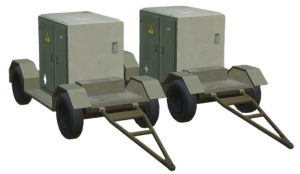
LRSAM: SA-11 BUK Site (3 crates) - Warsaw coalition
All player placed assets are deployed in a similar fashion, through the radio menu. Note that spreading out the crates before unpacking makes a difference, rendering the site less susceptible for a single cluster to wipe out.
We'll use the SA-11 site as a multi-crate example:
The number of crates needed to build an asset is indicated by the number on the right of it in the radio menu. 3 Crates are needed to build an SA-11 site.
Once all necessary parts (Launcher, Search Radar and CC Radar in this case) are in place and within 100m of each other, use the Unpack Any crate option to establish the site. SA-11 can not move but it is repairable with one BUK-repair crate as long as just one unit in the group is still alive. If the site is damaged to the point it can no longer fire, it will de-spawn after 30 minutes unless repaired.
The SA-11 site will start engaging targets autonomously. Strongest combination is achieved if the site is supplemented with an ammo truck for reloading and a SA-15 to intercept stand off weapons.
LRSAM: HAWK Site (4 crates) - NATO Coalition
Similar to the SA-11 Buk site, HAWK site just needs one additional crate:
A Hawk site can not move but it is repairable with one Hawk-repair crate as long as just one unit in the group is still alive. If the site is damaged to the point it can no longer fire, it will de-spawn after 30 minutes unless repaired.
MRSAM:SA-15 TOR (3 crates) - Warsaw coalition
SA-15 is a powerful short to medium range mobile radar guided SAM-system. TOR is capable of engaging aerial targets and A/G weapons. Once deployed, player can take control over and move it in JTAC slot manually or leave it for autonomous engagement.
MRSAM: SA-19 Tunguska (2 crates) - Warsaw coalition
SA-19 Tunguska is a short range combined SAM / AAA mobile weaponry. Once deployed, player can take control over and move it in JTAC slot manually or leave it for autonomous engagement.
MRSAM: ROLAND ADS (2 Crates) - NATO Coalition
Roland ADS is a radar guided short to medium range Mobile SAM-system. Once deployed, player can take control over and move it in JTAC slot manually or leave it for autonomous engagement.
MRSAM: NASAMS-C (3 Crates) - NATO Coalition
NASAMS is an area denial SAM system complemented with 4 x AIM-120C AMRAAM launchers. NASAMS will inconspicuously track targets noticeable only by RWR nails. Tracking radar won't spike targets at any point. Only the missile launch is detectable by RWR. Although limited in range, the smokeless and active missiles make the NASAMS a deadly combo. NASAMS is also capable of intercepting A/G-Munitions'. NASAMS can not move but it is repairable with one NASAMS-repair crate as long as just one unit in the group is still alive.
MRSAM: KUB SA-6 SAM Site (2 crates) - Warsaw coalition
A Kub SAM site requires a single search radar and a single launcher crate to become operational. Once both Launcher and Search radar crates are dropped within 100m of each other, you can use the "Unpack nearby crate(s)" CTLD command to deploy the SA-6 and it will begin operating automatically. A KUB-site will persist between restarts and a duration of 6hrs 30 minutes. A KUB repair crate will reload the missiles and repair any damaged or destroyed units as long as at least one unit is still alive. A KUB site consists of 1 x Radar and 4 x Launcher. A KUB site can not move but it is repairable with one KUB-repair crate as long as just one unit in the group is still alive.
SHORAD: M1097 AVENGER (2 crates) - NATO coalition
M1097 AVENGER is a Short range IR guided mobile SAM -system. Once deployed, player can take control over it in JTAC slot manually or leave it for autonomous engagement. Avenger feature a lot more ammo over the man-pads, however, they are more easily observed by the enemy team.
SHORAD: SA-13 STRELA (2 crates) - Warsaw coalition
SA-13 Strela is a Short range IR guided mobile SAM -system. Once deployed, player can take control over it in JTAC slot manually or leave it for autonomous engagement. Although it has a radar for missiles firing solution, the missiles are IR-guided.
SHORAD: ZU-23 AAA Emplacement (1 Crate) - All coalitions
One crate is needed to establish a fixed ZU-23 AAA emplacement. Once deployed, player can take control over it in JTAC slot manually or leave it for autonomous engagement.
SHORAD: ZSU-23-4 Shilka (1 Crate) - Warsaw coalition
Shilka is an anti air artillery gun equipped with a radar for ranging and firing solution. Once deployed, player can take control over it in JTAC slot manually or leave it for autonomous engagement.
SHORAD: M-163 Vulcan (1 Crate) - NATO coalition
Vulcan is an anti air artillery gun equipped with a radar for ranging and firing solution. Once deployed, player can take control over it in JTAC slot manually or leave it for autonomous engagement.
MANPAD: Stinger (1 Crate)
One manpad crate is needed to establish a stinger / igla infantry. Manpad has three missiles. An ammo truck can keep the manpad supplied with ammo. Stingers cannot be deployed on static ships or anywhere else over the water. Low observability is a key feature of man-pads
GROUND UNITS: EWR - All coalitions (1 Crate) - All Coalitions
One EWR crate is needed to establish an Early Warning Radar. This asset comes in handy when there's no friendly AWACS coverage. EWR contributes for the GCI picture. EWR reports found in the F10 radio menu - updated every 7 seconds are subject to EWR coverage. Player deployed EWR's will additionally contribute for the Flanker datalink. Where live automated GCI via SRS is available, both base and player deployed EWRs contribute for the picture.
Note: to simulate the difficulty in detecting and tracking low and slow flying objects (helicopters), we have introduce a filter that will allow any helicopter flying under 120 meters AGL and under 100 km/h to remain undetected by the EWR.
TROOPS: JTAC - All Coalitions (1 Crate) - All Coalitions
JTACs are deployed in the same fashion as EWR's and AAA. Once deployed. They will automatically search for targets, mark them accordingly, red smoke for red units, blue smoke for blue units and laze them one by one. A server message including the coordinates and a lazer-code is sent to your coalition on targets acquired. Line of sight is required. AI-JTAC will prioritize air defenses and will switch targets automatically upon destruction. NATO unit = Scout HMMWV armed | WARSAW unit = Scout BRDM-2 armed
| Coalition | Default laser code | Cold War Laser Code |
|---|---|---|
| NATO | 1688 | 1113 - To allow A10 TISL to display diamond on hud |
| WARSAW | 1687 | 1113 - To allow SU25 to display on hud |
GROUND UNITS: Anti-ship missile batteries (2 Crates) - All coalitions
Silkworms can be deployed by both teams and by same criteria as any deployable. Silkworm battery includes 6 x launcher 1 x radar. Upon Unpacking they will autonomously engage ships within 37km or 20nm distance. Vessels illuminated by the AWACS can increase the maximum distance up to 100km or 54nm. Site elevation has an impact on maximum range. The radar should be situated in the direction of fire to make ensure line of sight. Silkworms can be reloaded manually by supplying it with a silkworm launcher crate -> unpack.
GROUND UNITS: Ammo Trucks - (2 Crates) All coalitions
An ammo truck can be unpacked from two pieces of crates placed in close proximity of each other. Ammo truck will then automatically re-supply any friendly CTLD-deployed units within 100 meters.
FOB: - Forward Operating Bases (4 crates) - All coalitions
FOB's require 4 crates to be established. FOB's are currently available for modern scenarios. A FOB will expire after 6hrs 20minutes. Each created FOB will also have a built in beacon which you can home in to find it's location and will broadcast until expired. Frequencies and FOB positions can be obtained via radio menu.
FOB's may then be used to pick up more crates for as long as the concrete compound is intact. FOB also features an invisible FARP, meaning you can re-arm and refuel any aircraft, including fixed wing as long the fuel truck and ammo-truck are alive and within 100 meters distance. FOB's can only be deployed outside 7km or 3,8nm from a friendly airfield or a FARP. From the FOB itself, one can load up and place deployables outside 3.7km or 2.0nm distance.
| FOB |
|---|
| 1 x Watchtower |
| 1 x Ammo truck |
| 1 x Fuel truck |
| 2 x Tents (single unit) |
| 1 x FARP Ammo Storage |
| 1 x FARP Fuel Depot |
| 1 x Concrete compound |
Capturing Airfields & FARP's
Only a NEUTRAL airfield or a FARP, is capturable. Objective CLOSED is not the same as NEUTRAL. CLOSED means the objective still has enemy units but the enemy cannot spawn there anymore.
Once the airfield or a FARP has no units remaining, its' status will be listed as "neutral" and "capturable" in the PAK-info menu.
Best option is to use a logistics air frame (UH-1, Mi-8, SA-342L) capable of loading up troops and a repair crate simultaneously from any friendly airbase, farp, roadbase, naval base or a carrier. Load up the troops and a repair crate via radio menu using the CTLD-options.
Troops are required to capture the objective. With the exception of the JTAC type troops, any kind of troops can be used. Bear in mind that only a few elements (rifleman) can actually trigger a capture. For that reason make sure this type of element is inside the perimeter of the objective in order to successfully capture it.
Navigate to the capturable objective and extract your troops, within 5km (ideally less) from the radio masts marking the objective location. Wait for a server message "...has captured objective x"
Once objective is captured, you can drop the repair crate also enforced by a server message.
Friendly infrastructure and air-defenses will only begin spawning in once at least one repair compound is established, see the Repair mechanics for a more detailed description
Repair mechanics
Airbases, FARPs, Fuel-bases, Army-bases, Road-bases, Naval-Bases and SAM-sites, are not automatically repaired. Starting from a neutral status, friendly troops must be brought in, in order to bring the airfield or a FARP under your coalitions control - only then the repairs will take effect upon deployment. You can check the coalition ownership status via PAK-info.
Load up a repair crate into your logistics airframe via comms menu / CTLD from another airbase or a FARP under your coalitions control. Ferry the crate in the vicinity of the airfield or a FARP/SAM, that needs to be repaired. Unload the repair crate via CTLD menu. One repair crate will established into a 4-unit repair compound. For each repair compound, at least one unit of the repair compound must remain alive to keep the repairs contributing for the repairs. e.g. if the opposing team destroys 4 trucks, the repairs will continue as if there were 2 repair compounds remaining. The whole template of 4 units must be taken out in order to stop the repair timer for each repair compound.
| MODERN | 80s | 60s |
|---|---|---|
| 1 x Outpost | 1 x Outpost | 1 x Outpost |
| 1 x Re-Arm Truck | 1 x Re-Arm Truck | 1 x Re-Arm Truck |
| 1 x AAA | 1 x AAA | 1 x AAA |
| 1 x S-60 Flak Gun |
A total of two repair compounds may be established, unpacked total of 2-4 repair compounds unit depending on scenario for each airbase, Naval base, Army Base, FARP or a SAM-site. A timer will start running, spawning in units back in a random order.
One compound will repair an airbase from 0% to 100% within a randomized timer between 40 - 60 minutes.
One compound will repair a FARP/SAM from 0% to 100% within a randomized timer between 30 - 50 minutes.
One compound will repair a Naval Base from 0% to 100% within a randomized timer between 50 - 80 minutes.
Two compounds established will cut the repair times in half.
If any unit is either destroyed or damaged at the objective with repair compounds in place, the repair timers are reset and there's a 10 minute guaranteed time frame for no repairs taking place.
How do I know which objectives needs to be repaired?
1.Through the PAK-info, look for number of logistics . However, the base must be repaired above 0% for the PAK-info to return the number of logistics established. Therefore a recently captured objective does not list the logistics while there may be already maximum of two established.
2. A GCI or a player involved in the said AO may be able to check upon verbal request using SRS. Players are always encouraged to communicate their intentions via SRS to avoid overlapping actions and for co-ordinated planning.
3. You may count the units yourself in a JTAC/GCI slot.
What happens if I bring in a redundant repair crate?
The crate can be unloaded, but it won't be established into a repair compound. However, the crate can be left in the premises, in case one of the repair compounds is taken out. The crate may then be picked up and and unloaded again and a repair compound will be re-established.
How do I repair the carrier group?
Currently the carrier groups have their own home ports which are not indicated on the gadget map. As long as the fleet is either fully or partially alive, a repair crate can be delivered directly onboard one of the fleet vessels, spawning the repair compounds to it's home port. If the fleet is completely taken out - a repair crate or fuel crate can be delivered to the ports. If the port is destroyed, it will deny the repairs, fuel supply and re-spawning of the carrier group. Carrier group repair timers are longer than usual. One repair compound = 2 - 2,5 hrs | Two repair compounds = 1,5 - 2 hrs

